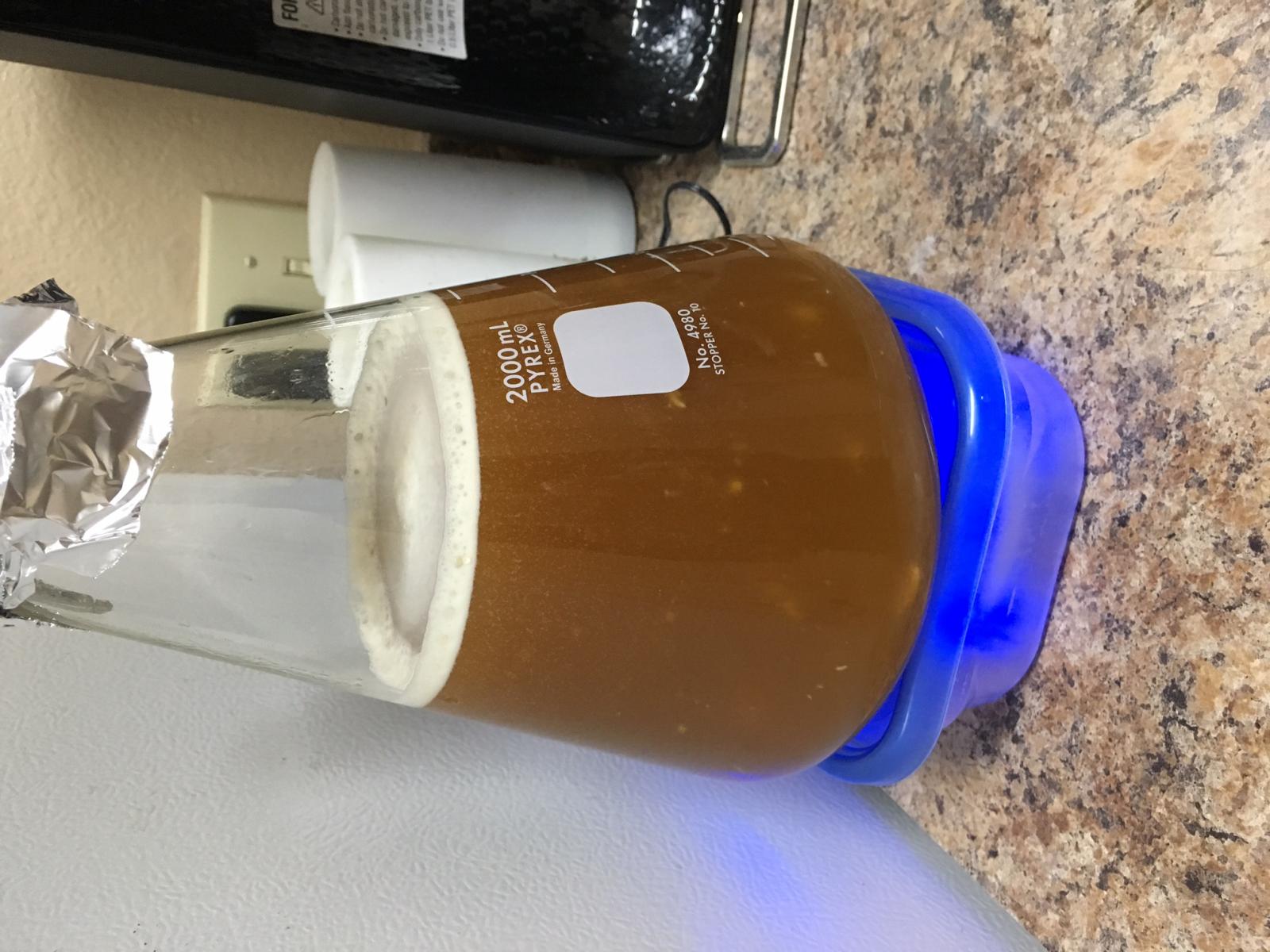I'm looking for some cheap DIY tips -- I've built (as you can see below) what you might call a stir plate, thrown together from some cheap parts. But hey it (mostly) works!
At first I had a hard time keeping the stir bar from spinning out of control, and went from one magnet per side to three. I've since been doing some 2L size starters for lagers (in the past I'd been doing .8L-1.5L starters with fresher yeast, which based on calculators was more than enough to get to the ~200B or so cells I shoot for in most of my low gravity ales).
The problem: I'm not able to get much of a funnel at the 2L+ size without throwing my stir bar off the magnets. The starter is controlled by a fan speed nob below the fan, not pictured, and I can only get up to about half speed. I can actually get it going with just the wort, but once the yeast had a chance to establish itself, the liquid appears to somewhat thicken, and my stir plate can't keep up.
I'm wondering if anyone else has souped up their cheap homemade stir plate. I don't know much about magnets, should I be trying to find stronger ones (if so, what are those called?)...or is there a problem with my stir bar? I've had trouble keeping large bars on center even at low volumes, probably because of the magnet spacing...
...curious anyone else's experience. Thanks!

At first I had a hard time keeping the stir bar from spinning out of control, and went from one magnet per side to three. I've since been doing some 2L size starters for lagers (in the past I'd been doing .8L-1.5L starters with fresher yeast, which based on calculators was more than enough to get to the ~200B or so cells I shoot for in most of my low gravity ales).
The problem: I'm not able to get much of a funnel at the 2L+ size without throwing my stir bar off the magnets. The starter is controlled by a fan speed nob below the fan, not pictured, and I can only get up to about half speed. I can actually get it going with just the wort, but once the yeast had a chance to establish itself, the liquid appears to somewhat thicken, and my stir plate can't keep up.
I'm wondering if anyone else has souped up their cheap homemade stir plate. I don't know much about magnets, should I be trying to find stronger ones (if so, what are those called?)...or is there a problem with my stir bar? I've had trouble keeping large bars on center even at low volumes, probably because of the magnet spacing...
...curious anyone else's experience. Thanks!






